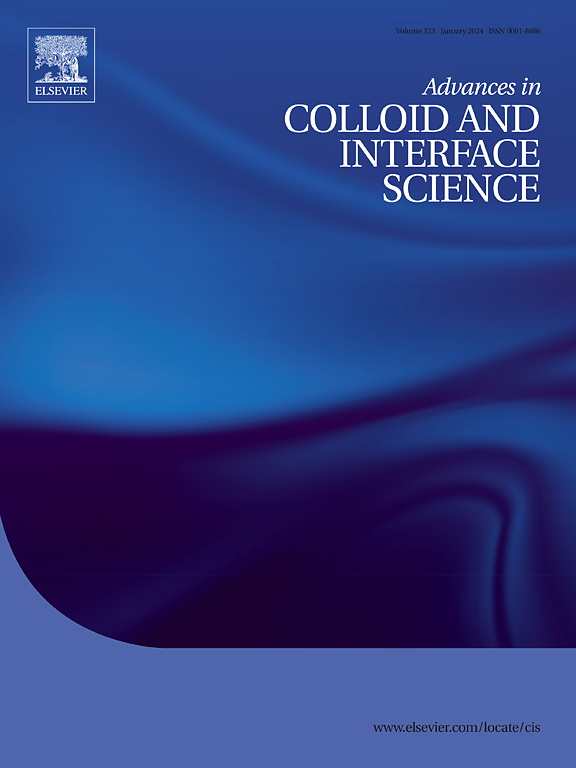揭示聚合纳米粒子的力量:乳腺癌治疗的开创性进展
IF 15.9
1区 化学
Q1 CHEMISTRY, PHYSICAL
引用次数: 0
摘要
乳腺癌已经成为世界上最常见的癌症类型。化疗是一种普遍有效的治疗乳腺癌的方法;然而,它提出了几个问题,可能会影响治疗的有效性和患者的生活质量。某些乳腺癌细胞从一开始就表现出对化疗药物的固有耐药性。癌细胞可能在整个治疗过程中进化,对以前成功的药物产生耐药性。这包括增强的药物外排(例如,通过p -糖蛋白),增强的DNA修复机制和药物靶点的修饰。此外,常规化疗存在药物溶解度差、血液循环时间缩短、损害健康组织、耐药、肿瘤复发等局限性。因此,必须提供显著剂量的化疗药物,以保证足够的剂量到达肿瘤并具有预期的效果。不幸的是,过量的药物剂量会损害健康组织,导致各种副作用,包括恶心、秃顶、疲劳、免疫系统崩溃、不育和器官功能障碍。在这种情况下,聚合物纳米颗粒,包括脂质体、纳米复合材料、聚合物胶束和树状大分子,相对于传统治疗有几个好处。这包括更长的循环时间,优越的靶向特性,与生物系统的相容性,自然降解性,以及肿瘤内载药纳米颗粒的更高保留率,从而减少了其他身体部位的副作用。这项工作为聚合物纳米颗粒作为一种先进的纳米药物递送技术用于化疗,特别是乳腺癌治疗提供了创新的视角。还分析了几种用于合成聚合物胶束的共聚物。本研究探讨了这些纳米颗粒的物理化学特征、它们的合成方法、表征技术、药代动力学行为以及它们在乳腺癌诊断中的适用性。本文章由计算机程序翻译,如有差异,请以英文原文为准。

Unveiling the power of polymeric nanoparticles: Pioneering advances in breast cancer treatment
Breast cancer has become the most common type of cancer worldwide. Chemotherapy is a prevalent and efficacious treatment for breast cancer; yet, it presents several problems that might impact both the treatment's effectiveness and the patient's quality of life. Certain breast cancer cells exhibit inherent resistance to chemotherapeutic agents from the outset. Cancer cells may evolve throughout therapy, developing resistance to previously successful medications. This encompasses augmented drug efflux (e.g., via P-glycoprotein), enhanced DNA repair mechanisms, and modifications in drug targets. Moreover, conventional chemotherapy is impeded by several limitations, including poor drug solubility, reduced blood circulation time, harm to healthy tissues, drug resistance, and tumor recurrence. Consequently, it is essential to provide significant doses of chemotherapeutics to guarantee that a sufficient amount reaches the tumor and has the desired effect. Unfortunately, the administration of excessive pharmacological doses damages healthy tissue, resulting in various side effects including nausea, baldness, fatigue, immune system breakdown, sterility, and organ dysfunction. In this context, polymeric nanoparticles, including liposomes, nanocomposites, polymeric micelles, and dendrimers, have several benefits relative to conventional therapy. This encompasses greater circulation duration, superior targeting characteristics, compatibility with biological systems, natural degradability, and higher retention of drug-loaded nanoparticles inside tumors, leading to diminished side effects in other bodily regions. This work offers innovative perspectives on the use of polymeric nanoparticles as an advanced nano-drug delivery technology for chemotherapeutics, particularly in breast cancer therapy. It also analyses several kinds of copolymers used in the synthesis of polymeric micelles. This study examines the physicochemical features of these nanoparticles, their synthesis methods, characterization techniques, pharmacokinetic behavior, and their applicability in breast cancer diagnostics.
求助全文
通过发布文献求助,成功后即可免费获取论文全文。
去求助
来源期刊
CiteScore
28.50
自引率
2.60%
发文量
175
审稿时长
31 days
期刊介绍:
"Advances in Colloid and Interface Science" is an international journal that focuses on experimental and theoretical developments in interfacial and colloidal phenomena. The journal covers a wide range of disciplines including biology, chemistry, physics, and technology.
The journal accepts review articles on any topic within the scope of colloid and interface science. These articles should provide an in-depth analysis of the subject matter, offering a critical review of the current state of the field. The author's informed opinion on the topic should also be included. The manuscript should compare and contrast ideas found in the reviewed literature and address the limitations of these ideas.
Typically, the articles published in this journal are written by recognized experts in the field.

 求助内容:
求助内容: 应助结果提醒方式:
应助结果提醒方式:


